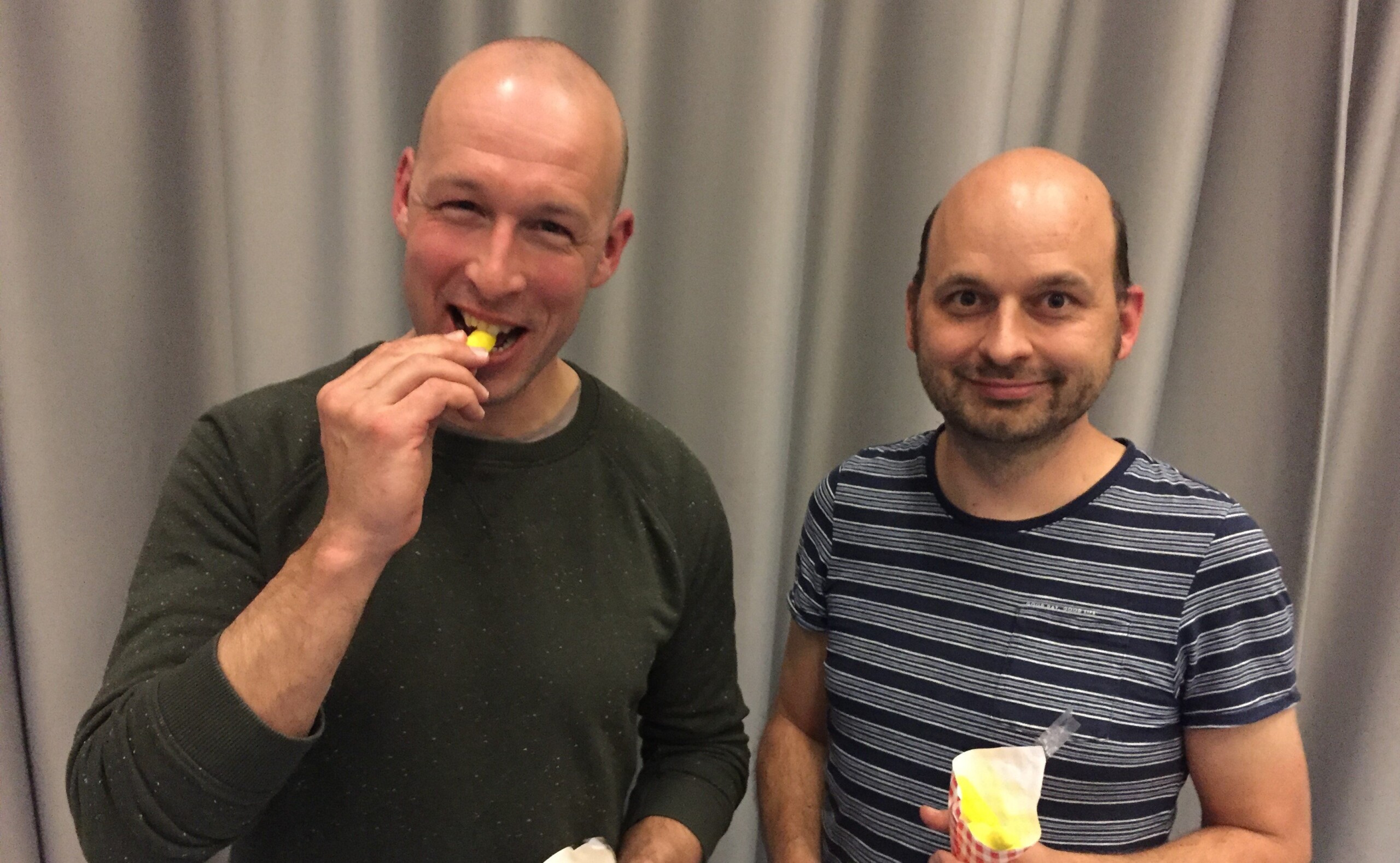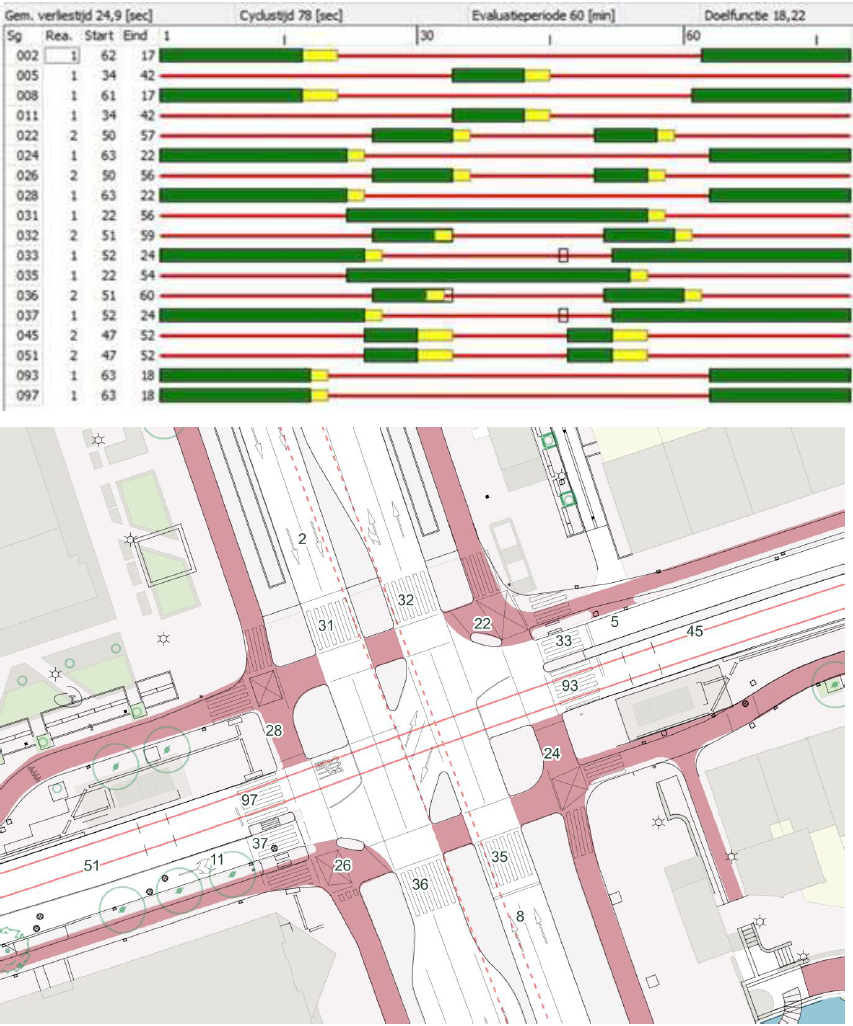Make way for the bicycle!
In Amsterdam we want to encourage bicycling. Going from A to B should be as easy and comfortable as possible for cyclists. The configuration of traffic lights and the infrastructural design are key factors, especially the interplay between these two. How can traffic flow for bikes be optimized?
Up to almost ten years ago, designing for bikes mainly meant making room (bike paths) and time (at the traffic lights). But the number of cyclists increased, so this way of designing eventually fell short. Bottlenecks can be prevented by adjusting intersections to busy bike traffic. There are also new developments in designing road sections the last years. Like bicycle streets where cars are considered as guests. And a maximum speed of 30 km/h starting 2023. Major improvements have been realized with the KiM project (small infrastructural measures), which is part of the Long Term Bicycle Plan. Traffic designer Kees Vernooij and traffic regulation designer Sjoerd Linders elaborate.

| Kees Vernooij and Sjoerd Linders. Photo: Thalia Verkade
How important is the interplay between small infrastructural measures and the configuration of traffic control installations?
The interplay is often very important. A solution which is spatially attractive for the bike (more width for cyclists) may have longer waiting times as a consequence. We have also seen that an adjustment leading to shorter waiting times makes waiting space for cyclists less relevant. In many cases, adjustments in physical space and adjustments in traffic control reinforce each other’s effects.
Improving traffic flow at a specific location asks for initial analysis. How do you tackle this?
During the last Long Term Bicycle Plan, we researched several busy intersections with camera images. What routes do cyclists take to cross an intersection (desire lines) and where do they line up? What we learnt from that turned out to be very useful in our search for improvements. In some cases, solutions could be directly derived from the way the space was used. This approach with camera observation is rather intensive and is not used everywhere at the moment, but it is very instructive. We have described the results in a Toolbox for bike-friendly intersections (Dutch only). A number of measures we can also be used at other intersections.
Cyclists in Amsterdam have given feedback on cycling while on the road with ‘Ping if you care’. Has this information been used while analyzing intersections?
The information from Ping turned out to be very useful for adjusting traffic regulation. For instance, we could see at what intersections and at what moments cyclists indicated they had to wait long. By combining this information with traffic light data we could search for solutions. In some cases the solution was quite simple: repair a bike loop.
In order te reduce running red lights, Amsterdam is experimenting a lot with behavioral change/’nudging’. Can you say that the best remedy against red light negation is an ‘honest’ and understandable configuration of traffic control installations?
A credible configuration is very important, but is not possible to make everywhere and at any time. Sometimes an intersection is designed and used in such a way that the configuration can’t always be ‘understandable’. We are now starting to research if we can quantify the credibility of traffic light regulation in a better way. The more we understand about this aspect, the better we can assess a physical design. This should benefit the credibility of the traffic light regulation on the street.
Without cars, traffic lights wouldn’t be necessary. Is this true?
You should only place traffic lights if it’s necessary. The first traffic light in Amsterdam, in 1932 on the Leidseplein, was mainly for regulating cyclists. But the trams and the few cars you had then, plus a confusing street design, made the lights necessary. It all depends on the complexity of the situation. But without cars, a lot of lights could indeed be removed.
Could many traffic control installations be removed eventually when maximum speed is reduced to 30 km/h?
Because 30 km/h on a distributor road doesn’t immediately mean less traffic, we don’t expect a large number of traffic lights can be removed. As soon as the number of cars is reduced, lights can be removed, as has happened at the Alexanderplein in 2016 (or read our own article).
Is it possible to formulate general principles for a better bike traffic flow?
Yes, there are generic measures you can use to improve capacity and flow of bike traffic. In many cases the behavior of cyclists offers a lead to a solution. And that behaviour is slightly different at every intersection. So a customized solution is necessary in order to make measures correspond. Sometimes we see that certain measures are taken in situations where there isn’t any point. So the first principle should be that you know what problem you need to solve. The best way to illustrate general principles is with a number of examples:
Some ‘old classics’, executed in 2016 and 2017:
- Dageraadsbrug: Better ‘flow’ for cyclists as a result of another design for waiting sections
- Mr.Visserplein: Inventive waiting section and increased capacity for driving away
- Berlagebrug/Weesperzijde: Very large waiting section making space for a large number of cyclists
On this website there is more information, with videos about the measures on these intersections.
Intersections that have been tackled more recently:
- Nassauplein: For the many cyclists who have to turn left, the two lights have been linked. And there is more room and flow for cyclists.
- Prins Bernhardplein: Customization for large streams of school children in the morning rush hour, by making larger waiting space and longer green light when there are large numbers of cyclists.
- Molukkenstraat/Ooster Ringdijk: More space for bikes, less for cars. In a road safety research, users gave this a positive rating
- De Ruyterkade/Oostertoegang: A very broad crossing for cyclists at this very busy cycling route between inner city and ferry.
And an already old classic:
- Weesperplein: Two times green per cycle for cyclists and trams across the Sarphatistraat when crossing the busy Weesperstraat. The general principle here is that cyclists can ‘piggyback’ with the measures for the tram.

More information
In the magazines below you can read more about how Amsterdam is working on a better flow for cyclists:







